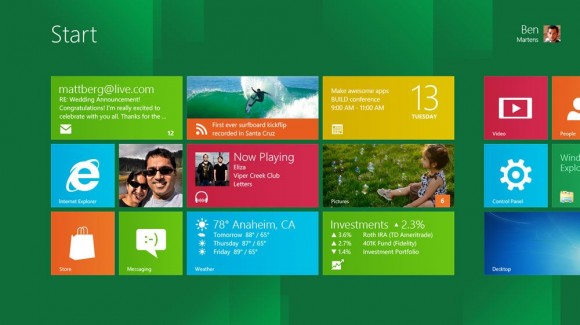
As soon as you switch on the Windows based PC, you will find an interface with a Start bar at the bottom of the screen. Microsoft had taken deviation in this respect by introducing a tiled application interface with Windows 8.
As a matter of fact, tiled interface is the popular and common interface used in mobile phones. Windows 8 comes with some other new features.
Let us check how Microsoft can substantiate its PC market and how it can capture noticeable market in the mobile arena after the launch of Windows 8.
Microsoft’s success in the past
Microsoft had great success in capturing the enterprise market. It has strong presence in servers, desktops and laptops. It fares well in the tablet market as well.
However, its presence is marginalized in the Smartphone market. The Smartphone market is shared by android and iOS (Apple) operating systems.
It is true that we use various kinds of gadgets in our daily life. These are powered by various kinds of processors, memory modules and operating systems.
Coming to the deployment of operating system, Microsoft is trying its level best to pose as the single operating system that can be installed on all kinds of gadgets. Even though it was not successful with this idea in Smartphone and tablet arena, the new operating system (Windows 8) has been worked out to achieve this feat.
Microsoft would like to offer a single surface that will let you read books, play video games, listen to music and make video calls.
Benefits of single OS

There are advantages and disadvantages of usage of a single operating system across various kinds of gadgets. It is easy to integrate on the hardware front. It is easy to develop applications that support OS rather than the gadgets.
As small gadgets like Smartphones and tablets are being equipped with powerful processors, it will not be difficult to develop new applications that can be made workable across the gadgets. It is easy to update the OS at regular intervals.
It will be easy to network gadgets loaded with same OS than with gadgets loaded with various operating systems. Apple has achieved great success in this aspect as it can update the data (cloud resource) across all your iOS based gadgets.
The downside is if all the gadgets work on the same OS, security vulnerabilities will increase. Customers will not be able to take advantage of the new happenings and facilities offered by other operating systems.
How can Microsoft achieve success in future?
It is true that Microsoft tries to achieve success by attracting new customers through Windows 8. In this context, it has introduced a number of measures in Windows 8.
The change in the visual interface and way of access to applications will certainly give a new look to the users. It will be difficult for legacy users to adjust to the new changes.
Microsoft can fare better by creating demand for its products. Microsoft is ambitious to offer Windows as a single OS for various kinds of gadgets.
However, it fails to prove its capabilities as Apple has proven over the years. If a customer wants to prefer gadgets based on a single OS, he or she will certainly prefer the Apple’s iOS than opting for Microsoft’s Windows.
There are many reasons for this substantiation. Apple has proven its capability in innovation, user friendliness and lots of choice (over application development and deployment).
Apple has created an ecosystem that attracts both developers and customers to embrace. Microsoft fails in this aspect. Microsoft would like to keep everything in its hands and makes customers to depend on it forever.
The practices adopted by Microsoft are against the open principles. Linux and Android comes with greater flexibility and openness to succeed on the desktop and Smartphone segment respectively.
Microsoft should realize the fact that the interface deployed should be relevant to the form factor. Mobile phones do not need start bar and desktops do not require tiled surface.
Instead of rubbing the same OS across various gadgets, the OS should be customized for the gadget. Microsoft should take measures to compromise with its monopolistic measures both on hardware and software front. By giving greater precedence to open standards, Microsoft can achieve success in the long run.
